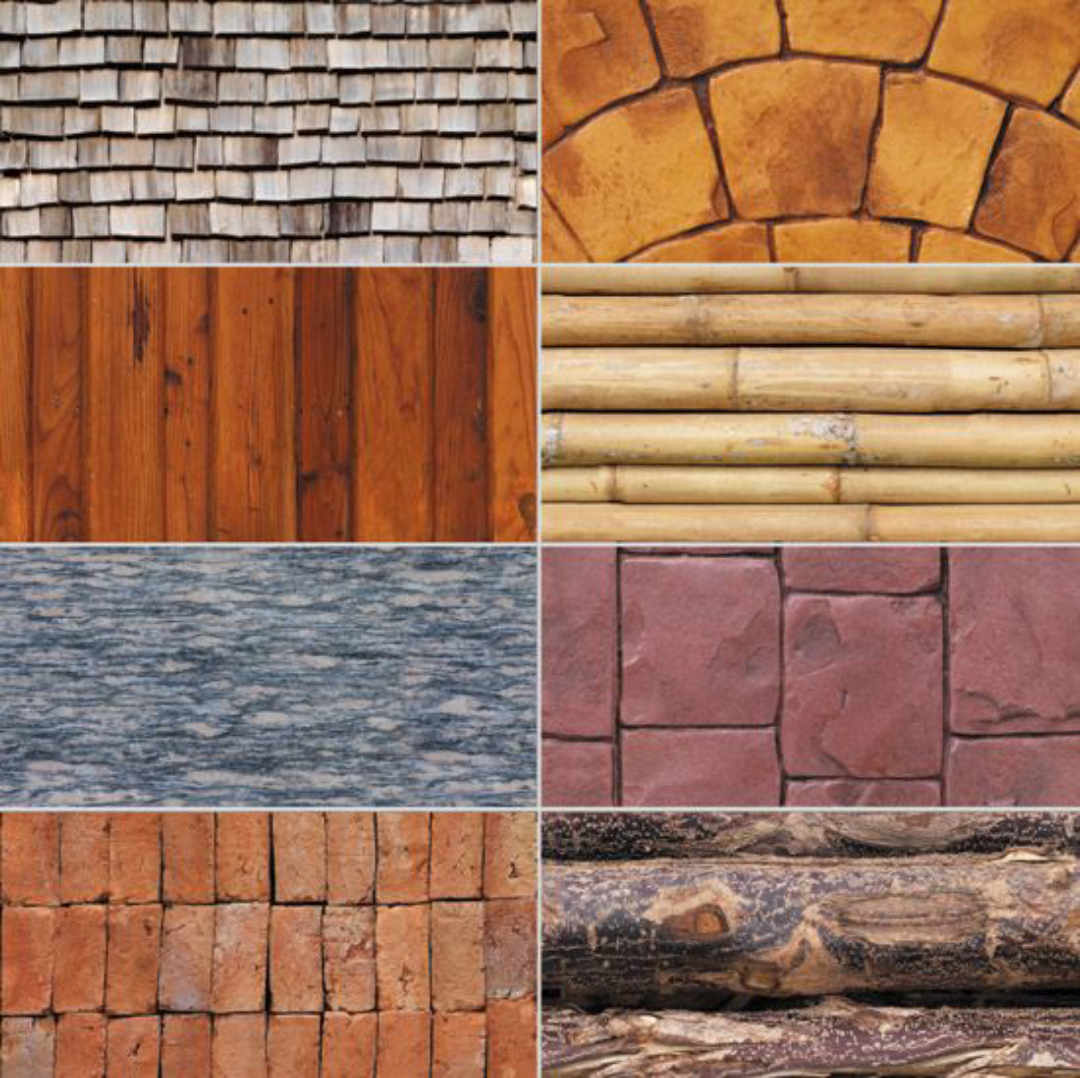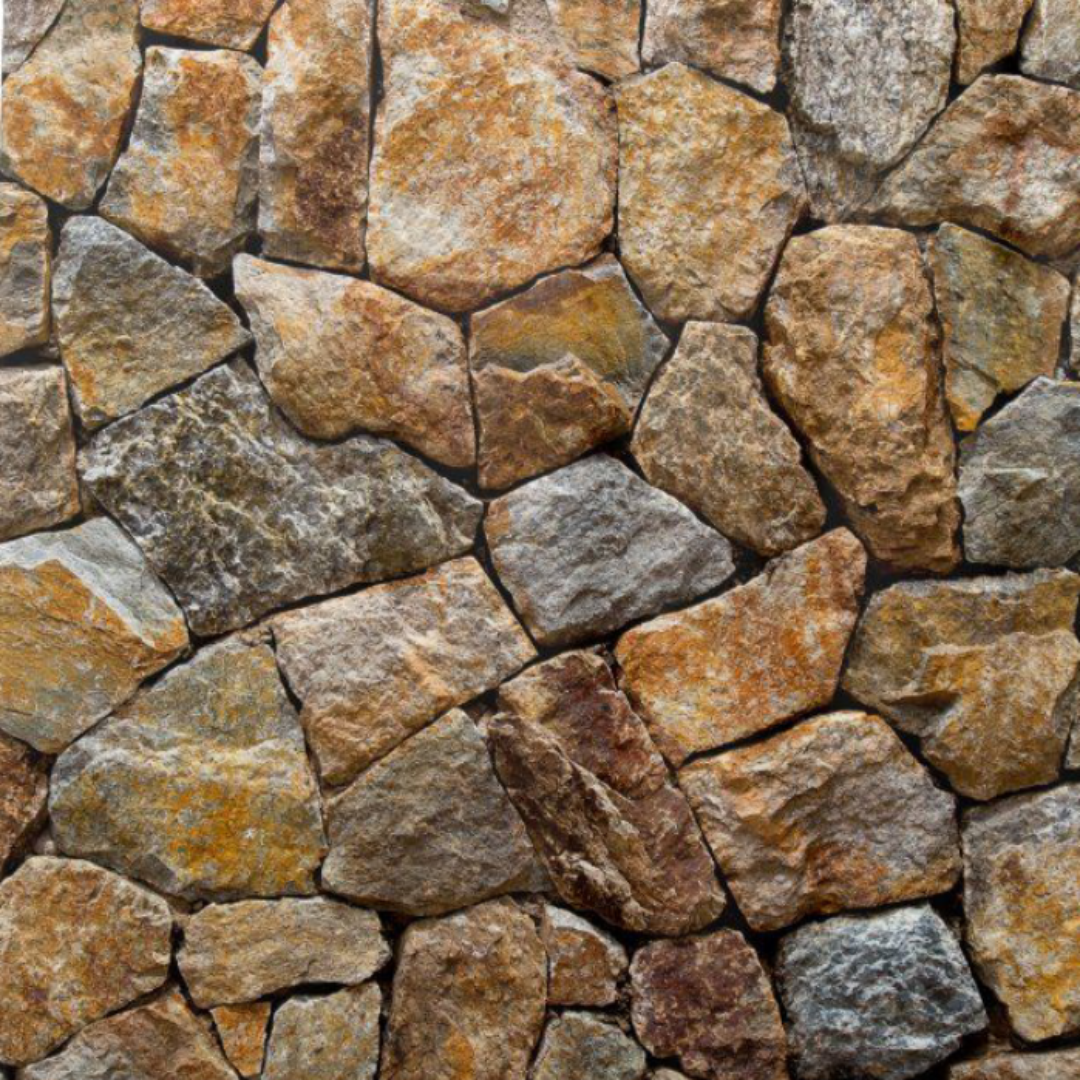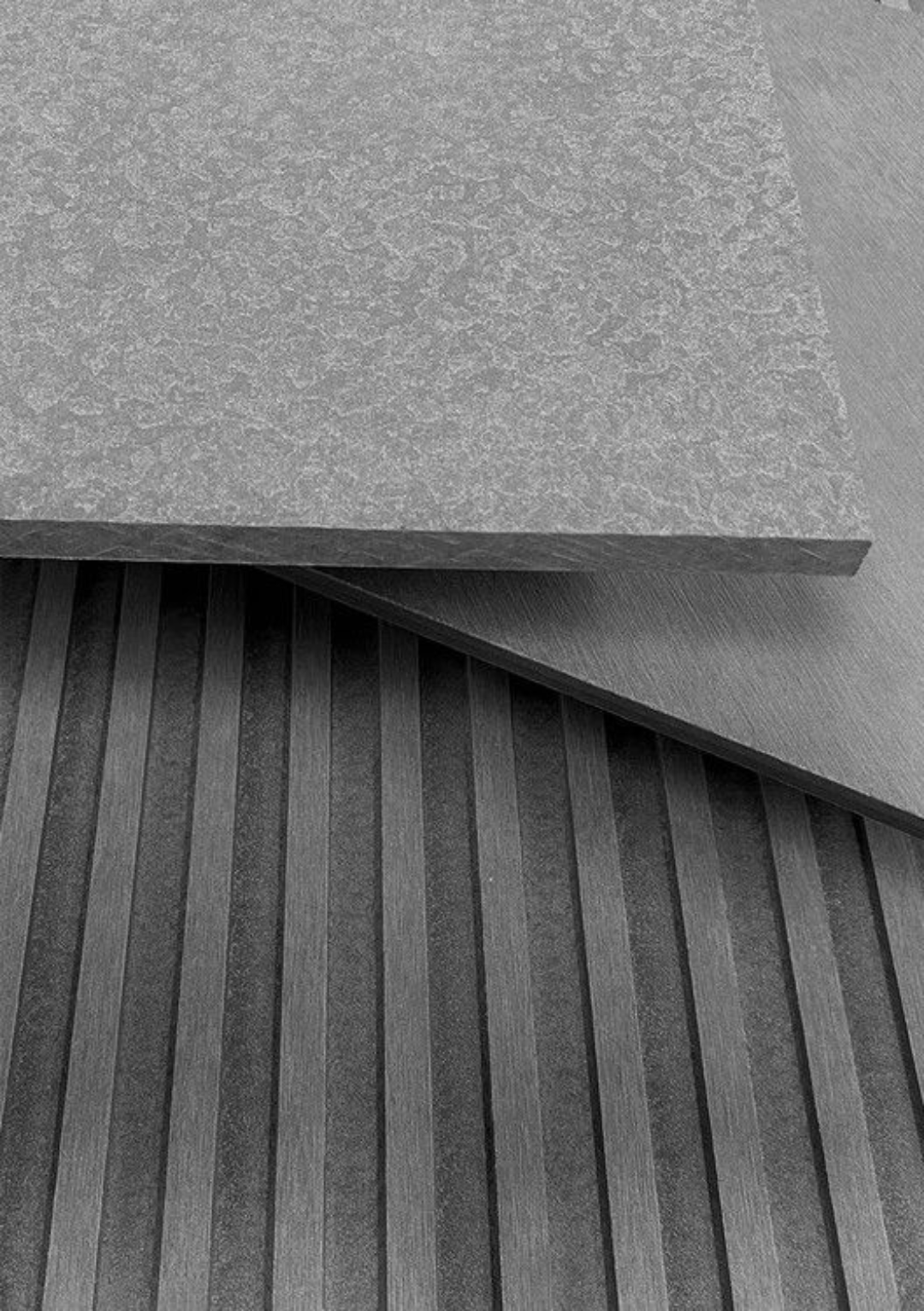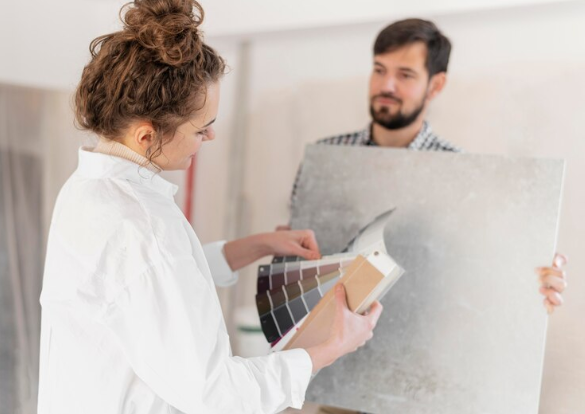The Most Durable Building Materials
When it comes to construction, durability is a key factor in ensuring that a building stands the test of time. Using long-lasting materials not only adds to the structural integrity of a project but also reduces maintenance costs over the years. In this blog post, we’ll explore some of the most durable building materials used in construction.

Concrete:
Concrete is one of the most essential and enduring building materials used in construction. It is a composite material composed of several components, primarily cement, water, aggregates (such as sand and gravel), and sometimes additives or admixtures for specific properties.
Here are some key characteristics and advantages of concrete as a durable construction material:
1. Strength and Durability: Concrete is renowned for its exceptional compressive strength, making it capable of withstanding heavy loads. Properly designed and cured concrete structures can last for centuries without significant degradation.
2. Fire Resistance: Concrete is inherently fire-resistant, which is a crucial safety feature in building construction. It does not burn, and its high heat resistance can prevent the spread of fires.
3. Weather Resistance: Concrete can withstand a wide range of weather conditions, including extreme temperatures, moisture, and freeze-thaw cycles. This durability makes it suitable for various climates.
4. Versatility: Concrete is highly versatile and can be molded into various shapes and forms. It is used in everything from foundations and walls to highways and bridges.
5. Low Maintenance: Concrete structures require minimal maintenance over their lifespan. Regular inspections and minor repairs can help extend their durability even further.
6. Longevity: Well-maintained concrete structures have an incredibly long lifespan, often exceeding 50 years or more. Some historical concrete buildings and structures have stood for over a century.
7. Sustainable: Concrete can be a sustainable choice when produced and used responsibly. The use of recycled materials, efficient production methods, and consideration of the environmental impact can make concrete construction more eco-friendly.
8. Resistant to Pests and Mold: Unlike wood, concrete is not susceptible to pests, termites, or rot. It is also not a food source for mold or fungi, contributing to its longevity.
9. Sound Insulation: Concrete has excellent sound insulation properties, making it suitable for reducing noise transmission between different parts of a building or from external sources.
10. Aesthetic Options: Concrete can be finished in various ways to achieve different aesthetics, from exposed aggregate and polished surfaces to colored and textured finishes, allowing for design flexibility.
Despite its many advantages, it’s essential to note that concrete does have some drawbacks, such as its carbon footprint, which can be significant due to the production of cement. However, ongoing research and development in the construction industry aim to mitigate these environmental concerns through the use of alternative cementitious materials and sustainable practices.
Overall, concrete remains a cornerstone of the construction industry due to its unmatched combination of strength, durability, and versatility. It continues to play a vital role in building everything from homes and commercial structures to infrastructure projects worldwide.
Steel:
Steel is a versatile and durable building material that plays a crucial role in construction across the globe. It is primarily an alloy of iron and carbon, with varying amounts of other elements such as manganese, silicon, and sometimes trace amounts of other elements. Here are some key characteristics and advantages of steel as a construction material:
1. Strength: Steel is renowned for its exceptional tensile and compressive strength. It can withstand heavy loads and provides structural integrity to buildings and infrastructure projects.
2. Durability: Steel is highly resistant to corrosion, which makes it ideal for use in a wide range of environments, including coastal and industrial areas. Properly coated or galvanized steel can last for decades without rusting.
3. Flexibility: Steel is malleable and ductile, allowing it to be shaped into various forms and profiles. This flexibility makes it suitable for a wide array of structural applications, from beams and columns to framing and reinforcement.
4. Speed of Construction: Prefabricated steel components can be manufactured off-site and quickly assembled at the construction site, reducing construction time and costs.
5. Sustainability: Steel is highly recyclable, and a significant portion of the world’s steel production comes from recycled sources. Recycling steel saves energy and resources, making it an eco-friendly choice.
6. Fire Resistance: Steel maintains its structural integrity at high temperatures, making it a suitable choice for fire-resistant building designs.
7. Cost-Effective: While the initial cost of steel can be higher than some other building materials, its long lifespan, low maintenance requirements, and ease of construction often result in cost savings over the life of a building.
8. Versatility: Steel can be used in a variety of construction applications, including skyscrapers, bridges, industrial facilities, residential buildings, and more.
9. Earthquake Resistance: Steel-framed structures can be designed to withstand seismic forces, making it a preferred choice in earthquake-prone regions.
10. Design Freedom: Architects and engineers can explore creative and innovative designs using steel due to its strength and flexibility. Steel can be used to create open and expansive spaces with minimal support columns.
11. High-Quality Standards: Steel production follows stringent quality control standards, ensuring consistency and reliability in its properties.
12. Reduced Construction Waste: Steel components are typically fabricated to precise measurements, reducing on-site waste and contributing to a cleaner construction process.
While steel is highly advantageous for construction, it’s essential to consider factors such as thermal conductivity, which can affect energy efficiency in buildings. Additionally, the carbon emissions associated with steel production have prompted efforts to develop more sustainable steel production methods, such as electric arc furnaces powered by renewable energy sources.
Brick:
Brick is a timeless and durable building material that has been used in construction for thousands of years. It is made from fired clay or shale and is known for its strength, longevity, and aesthetic appeal. Here are some key characteristics and advantages of brick as a construction material:
1. Durability: Brick structures can last for centuries, often requiring minimal maintenance. The fired clay is resistant to rot, pests, and weathering, making it an excellent choice for long-lasting construction.
2. Fire Resistance: Brick is highly fire-resistant, which adds a significant safety feature to buildings. It doesn’t contribute to the spread of fires, making it suitable for both residential and commercial applications.
3. Thermal Mass: Brick has excellent thermal mass properties, meaning it can store and release heat slowly. This helps regulate indoor temperatures and can contribute to energy efficiency in buildings.
4. Weather Resistance: Brick can withstand various weather conditions, including rain, wind, and extreme temperatures. It doesn’t fade or deteriorate over time due to exposure to sunlight.
5. Low Maintenance: Brick requires minimal maintenance compared to some other building materials. Occasional cleaning or repointing of mortar joints may be necessary, but overall upkeep is straightforward.
6. Aesthetic Versatility: Brick comes in various colors, sizes, and textures, offering architects and builders a wide range of design options. It can be used to create both classic and contemporary architectural styles.
7. Sustainability: Bricks are made from natural clay, which is abundant and locally available in many regions. Additionally, some manufacturers produce bricks using sustainable practices and energy-efficient kilns.
8. Noise Reduction: Brick walls provide good sound insulation, which can help create quieter indoor environments.
9. Resale Value: Homes and buildings constructed with brick often have higher resale values due to their durability and timeless appeal.
10. Easy to Recycle: Bricks can be recycled, and reclaimed bricks are often sought after for renovation and restoration projects.
11. Resistance to Termites and Pests: Unlike wood, brick is not susceptible to termite infestations or damage by other pests.
While brick offers numerous advantages, it’s essential to consider its weight, which can affect the foundation and structural requirements of a building. Additionally, brick construction can be labor-intensive, which may impact construction costs.
Stone:

Natural stone is a timeless and durable building material that has been used in construction for thousands of years. It offers a unique combination of beauty, strength, and longevity. Here are some key characteristics and advantages of natural stone as a construction material:
1. Durability: Natural stone is one of the most durable building materials available. It can withstand the test of time and remain structurally sound for centuries. Many historical structures made of stone are still standing today.
2. Aesthetic Appeal: Stone is renowned for its natural beauty and varied textures. It adds a touch of elegance and sophistication to any architectural design. Each stone type has its unique color and texture, allowing for endless design possibilities.
3. Fire Resistance: Stone is inherently fire-resistant, making it an excellent choice for fireproofing and enhancing the safety of a building.
4. Low Maintenance: Stone structures require minimal maintenance. Regular cleaning and occasional repointing of mortar joints may be necessary, but the overall upkeep is relatively straightforward.
5. Sustainability: Stone is a natural resource that can be harvested in an environmentally responsible manner. Its longevity means that structures built with stone tend to have a lower environmental impact over time.
6. Resistance to Pests: Unlike wood, stone is not susceptible to termite infestations or damage by other pests.
7. Thermal Mass: Stone has excellent thermal mass properties, which means it can store and release heat slowly. This helps regulate indoor temperatures and contributes to energy efficiency.
8. Versatility: Natural stone can be used in various applications, including exterior cladding, flooring, countertops, and landscaping. Different types of stone, such as granite, marble, limestone, and sandstone, offer different aesthetic and functional qualities.
9. Longevity: Well-maintained stone structures can last for generations. The patina that develops on the surface of some stones over time can enhance their beauty.
10. Weather Resistance: Natural stone can withstand harsh weather conditions, including rain, snow, and UV exposure, without fading or deteriorating.
While natural stone offers many advantages, it’s important to consider factors such as cost, weight, and installation complexity. Stone can be relatively expensive compared to other materials, and the weight of stone cladding or structural elements may require additional support in the building’s design.
Copper:
Copper is a versatile and durable building material that has been used in construction for centuries. It offers a unique combination of properties that make it valuable in various applications in the construction industry. Here are some key characteristics and advantages of copper as a construction material:
1. Durability: Copper is highly durable and resistant to corrosion, making it an excellent choice for exterior applications and areas with exposure to the elements. Over time, copper develops a natural patina that protects it from further corrosion while adding to its aesthetic appeal.
2. Aesthetic Appeal: Copper’s warm reddish-brown color and unique patina make it a visually appealing material for architectural elements, roofing, and cladding. It can lend a timeless and elegant look to buildings.
3. Longevity: Copper roofing and cladding systems can last for well over a century with proper maintenance. This longevity reduces the need for frequent replacements and contributes to sustainable construction practices.
4. Low Maintenance: Copper requires minimal maintenance. The natural patina that forms on the surface provides a protective layer, reducing the need for cleaning or coatings.
5. Recyclability: Copper is highly recyclable and retains its quality even after multiple recycling cycles. Using recycled copper in construction projects reduces the demand for newly mined copper and lowers the environmental impact.
6. Thermal Conductivity: Copper has excellent thermal conductivity properties, making it ideal for applications where heat transfer is important, such as HVAC systems and solar water heaters.
7. Electrical Conductivity: Copper is one of the best conductors of electricity, making it essential in electrical wiring and grounding systems.
8. Bacterial Resistance: Copper possesses antimicrobial properties that inhibit the growth of bacteria, making it suitable for use in healthcare facilities and places where hygiene is critical.
9. Versatility: Copper can be formed into various shapes and sizes, allowing for versatility in architectural designs. It can be used for roofing, gutters, flashings, facades, and decorative elements.
10. Sustainable: The recyclability of copper, combined with its long lifespan and durability, makes it an environmentally friendly choice in construction.
11. Weather Resistance: Copper can withstand harsh weather conditions, including rain, snow, and UV exposure, without degrading or fading.
12. Historical Significance: Copper has a long history of use in architecture and is often associated with historic and iconic buildings, adding cultural and historical value to construction projects.
While copper offers numerous advantages, it’s essential to consider factors such as cost and the potential for theft, given its scrap value.
Fiber Cement:

Fiber cement is a relatively modern building material that has gained popularity in the construction industry due to its durability, versatility, and low maintenance requirements. It is a composite material made from a mixture of cement, cellulose fibers (typically wood pulp), sand, and sometimes other additives. Here are some key characteristics and advantages of fiber cement as a construction material:
1. Durability: Fiber cement is highly durable and resistant to rot, pests, and fire. It can withstand extreme weather conditions, making it suitable for a wide range of climates.
2. Low Maintenance: Fiber cement siding and panels require minimal maintenance. They are resistant to cracking, warping, and fading, which reduces the need for frequent repainting or repairs.
3. Weather Resistance: Fiber cement is engineered to withstand moisture, UV exposure, and temperature fluctuations without deteriorating. This resilience makes it ideal for exterior cladding.
4. Fire Resistance: Fiber cement is non-combustible and can resist flames and heat, contributing to the fire safety of a building.
5. Pest Resistance: Unlike wood siding, fiber cement is not susceptible to termites, woodpeckers, or other pests that can damage traditional materials.
6. Dimensional Stability: Fiber cement maintains its shape and structural integrity over time, even in changing weather conditions, which prevents warping or buckling.
7. Versatility: Fiber cement can be produced in various textures and finishes to mimic the appearance of wood, stucco, or stone, providing architects and homeowners with design versatility.
8. Paint Retention: Fiber cement holds paint exceptionally well, reducing the frequency of repainting. Many manufacturers offer pre-painted options with long-lasting warranties.
9. Sustainability: Some fiber cement products incorporate recycled materials, and their long lifespan reduces the need for frequent replacements, contributing to sustainability in construction.
10. Easy Installation: Fiber cement siding and panels are relatively easy to install. They are available in various sizes and formats, allowing for efficient installation.
11. Sound Insulation: Fiber cement provides moderate sound insulation, reducing noise transmission between indoor and outdoor spaces.
12. Resistant to Mold and Mildew: Fiber cement is not a food source for mold or mildew, making it suitable for wetter climates.
While fiber cement offers many advantages, it’s essential to consider its weight and the need for proper installation techniques to prevent issues like moisture infiltration.
Asphalt Shingles:
Asphalt shingles are a common roofing material used in residential and commercial construction. They are known for their affordability, ease of installation, and versatility. Here are some key characteristics and advantages of asphalt shingles as a roofing material:
1. Affordability: Asphalt shingles are one of the most cost-effective roofing materials available. They provide a good balance between price and performance, making them accessible for a wide range of budgets.
2. Easy Installation: Asphalt shingles are lightweight and easy to install, which can reduce labor costs and installation time compared to other roofing materials.
3. Variety: They come in a wide range of colors, styles, and textures, allowing homeowners to choose a look that complements their home’s architectural style.
4. Weather Resistance: Asphalt shingles are designed to withstand various weather conditions, including rain, snow, and wind. Many shingles are rated for wind speeds of up to 130 mph or more.
5. Energy Efficiency: Some asphalt shingles are designed with reflective coatings that can help reduce cooling costs by reflecting sunlight and heat away from the building.
6. Durability: While asphalt shingles have a shorter lifespan compared to some other roofing materials like metal or slate, they can still provide reliable performance for 20-30 years or more with proper maintenance.
7. Repairability: Individual damaged shingles can be easily replaced without the need to replace the entire roof, which can save on repair costs.
8. Low Maintenance: Asphalt shingles require minimal maintenance. Occasional inspections and cleaning are typically sufficient to keep the roof in good condition.
9. Fire Resistance: Many asphalt shingles are treated with fire-resistant coatings, improving the fire safety of the building.
10. Algae and Mold Resistance: Some asphalt shingles are designed with additives that resist the growth of algae and mold, helping to maintain the roof’s appearance.
11. Recyclability: Asphalt shingles can be recycled, and some manufacturers have recycling programs in place to reduce waste.
It’s important to note that the lifespan of asphalt shingles can vary based on factors like climate, maintenance, and the quality of the shingles used. Higher-quality shingles tend to have longer lifespans.



